| |

Traditions, folklore, history and more. If it's Irish, it's here. Or will be!
"People will not look forward to posterity who never look backward to their ancestors."
-Edmund Burke




Quotes
Library: Books, Movies, Music
Prints & Photos
Poetry
Jokes


Shops Ireland
Bunús na Gaeilge
(Basic Irish)
Circle of Prayer
Blessings
Did You Know?
Himself/Herself
Write to Us
Readers Write..
Links/Link to Us
Advertise with us
Awards & Testimonials
Submissions Guide

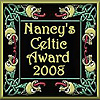
|
|
|
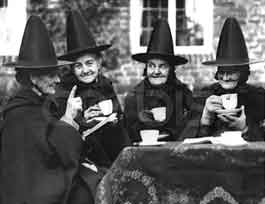 A Triple Treat for Halloween A Triple Treat for Halloween
by Bridget Haggerty
"One often hears of a horse that shivers with terror, or of a dog that howls at something a man's eyes cannot see, and men who live primitive lives where instinct does the work of reason are fully conscious of many things that we cannot perceive at all. As life becomes more orderly, more deliberate, the supernatural world sinks farther away."
William Butler Yeats.
Three Irish ghost stories that are so well documented, they'll make a believer out of you!
The spirit of a faithful dog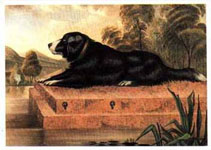
On the night of Saturday 8th February, 1861, the Irish Sea was swept by one of the worst gales of the century. The harbor at Kingstown, which is now Dun Laoghaire, was littered with debris and the wreckage of battered vessels. Scores of drowned seamen were found on the shoreline. Among those who helped to recover the bodies and clear the wreckage was a Captain McNeill Boyd who was in command of the coast guard vessel Ajax.
Three stricken ships - the Neptune, the Industry and the Mary tried to reach the shelter of the harbor. The Neptune and the Industry were smashed against the rocks while the Mary was wrecked further along the coast at Sandymount. Captain Boyd and three of his men set out in a lifeboat from the Ajax to try and rescue sailors clinging to the rocks. As always, the Captain's faithful companion, a black Newfoundland dog, accompanied him. While they were on the rocks trying to save the men, the Captain and three of his men were swept away by a giant wave. When another lifeboat from the Ajax went to search for Captain Boyd and his men, the only living thing they found was the Captain's dog who was still in the Captain's lifeboat.
Captain Boyd's body was finally recovered and he was given one of the biggest funerals ever seen in Dublin. The requiem Mass was held in St. Patrick's Cathedral; afterwards, the funeral procession made its way to Glasnevin Cemetery. The entire time, the Captain's dog stayed beside his master's coffin. At the cemetery, when the grave was filled in, the Captain''s devoted companion lay on top and refused to move. He also refused to eat or drink and eventually, he died of starvation.
A short time later, a memorial statue to Captain Boyd was erected in the Cathedral by the people of Dublin. Many times since then, a black Newfoundland dog has been seen sitting at the base of the statue. The ghost has also been seen lying on his master’s grave at nearby Glasnevin Cemetery.
The black mark of Lord Tyrone
Nicola Hamilton and John, Second Earl of Tyrone, were both educated at the same school and had common interests, including the subject of life after death and astrology. They entered into a pact that if there was life beyond the grave, the one who died first would let the other one know. Lord Tyrone left school and lived the life of a recluse; Nicola married Sir Tristram Beresford.
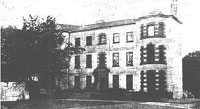
Photo of Gill Hall taken before a fire led to its eventual destruction. Photo appeared in the Bainbridge Leader, on June 6, 1969. With many thanks to Keith Abraham who found the photo and sent it to us.
In October, 1693, Sir Tristram and Nicola were on an extended visit with Nicola's sister at Gill House in County Down. On Wednesday, October 15th, Sir Tristam rose early, left Nicola asleep, and went for a walk before breakfast. When he returned, he found his wife very agitated. Both Sir Tristram and Nicola's sister were worried about a possible injury to his wife's wrist as she had it covered with a black ribbon. Nicola asked her husband and her sister never to mention her wrist again, adding that she would always be wearing the ribbon and would never be seen without it.
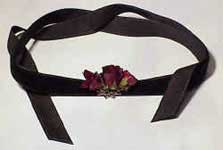 A few days later Nicola asked if any letters had been delivered for her. When asked why, she replied that she expected to learn of the death of Lord Tyrone, which she was sure had taken place the previous Tuesday. A short while later, a letter was delivered. The letter was from Lord Tyrone’s steward informing her that his master had died in Dublin the previous Tuesday, October 14th, 1693, at 4 pm. A few days later Nicola asked if any letters had been delivered for her. When asked why, she replied that she expected to learn of the death of Lord Tyrone, which she was sure had taken place the previous Tuesday. A short while later, a letter was delivered. The letter was from Lord Tyrone’s steward informing her that his master had died in Dublin the previous Tuesday, October 14th, 1693, at 4 pm.
Lord Tyrone had appeared to Nicola when Sir Tristram was taking his pre-breakfast walk. His reason for returning was to honor the promise they had made when they had both been at school together. He then told her that she would bear Sir Tristram a son, would marry for a second time, and would die at the age of 47. All these predictions were to come true. Finally, to prove that he really was there, he placed his finger on her wrist. His touch left a black mark on the skin and the skin around it shrivelled. To hide the disfigurement, Nicola covered it with a black ribbon.
Nicola never removed the ribbon until she was on her death bed. Her last request was to her son. She asked him to take the ribbon off. There, indeed, was a black mark and the skin surrounding it was shrivelled.
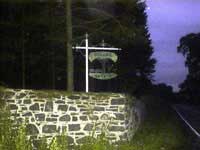
Gill Hall photo contributed by Keith Abraham of County Down who kindly corrected us on the estate's location. We had originaly said it was in County Waterford. Keith knew this was a mistake because he lives close by. He took this photo to prove it. Thanks, Keith!
 The apparition that saved a life The apparition that saved a life
In the 1880s, Lord Dufferin, who was later to become British Ambassador to Paris, was on vacation in Tullamore when he saw an apparition that was destined to save his life.
One night, at about 2 o’clock in the morning, he was startled from a deep sleep. He got up, went to the window and saw, in the moonlight, a hunchbacked figure on the lawn, staggering under the weight of a coffin-shaped object. Lord Dufferin raced downstairs, out onto the lawn, and asked the figure what he was doing, what he was carrying and why was he there. As the man lifted his head, Lord Dufferin saw that he had an extremely ugly-looking face which was utterly repulsive. The figure then vanished before his eyes. The following morning, he told his host of his experience but his friend was at a complete loss to explain the strange man. Certainly, there had been no reports of a ghost at Tullamore.
A few years later, Lord Dufferin was to attend a diplomatic function at the Grand Hotel in Paris. He waited at the elevator with his secretary and the hotel manager. Just as they were about to enter the elevator, Lord Dufferin drew back in horror and flatly refused to get on it. The elevator operator was the same man he had seen carrying the coffin on the lawn at his friend’s house in Tullamore. The elevator doors closed and the cage began its ascent. When it reached the fifth floor, the cable snapped and the cage crashed to the bottom of the shaft, killing all of the occupants.
The accident was fully investigated, but there was nobody who knew who the strange elevator operator was. Today elevators are fully inspected to avoid such accidents.
Resources: All content adapted and/or edited from stories that appeared in the Irish Heritage newsletter.
Image credit: Google Images Dog, Paris scene Eiffel Tower and Four Elderly Women Having Tea from All Posters
See our other articles on Samhain and Halloween below:
An Irish Hallowe'en - Part 1
An Irish Hallowe'en - Part 2
How the Irish Invented Halloween
A Triple Treat For Hallowe'en
The Churchyard Bride
Creepy Irish Castles and Houses
Creepy Irish Creatures
Irish Ghosts
Something Wicked this way comes - Irish Ghosts by Region
Protect your property and yourself - Make a Parshell Cross for Hallowe'en
The Dullahan
Samhain - The Irish New Year
The Day after Samhain - All Souls Day
|
|
Thu, Apr 4, 2024
 Ilnacullen, Co. Cork - an Island Garden Ilnacullen, Co. Cork - an Island Garden
Located in the sheltered harbour of Glengarriff in Bantry Bay. Ilnacullin, which means island of holly, is a small island known to horticulturists and lovers of trees and shrubs all around the world as an island garden of rare beauty.
The vivid colours of Rhododendrons and Azaleas reach their peak during May and June, whilst the hundreds of cultivars of climbing plants, herbaceous perennials and choice shrubs dominate the midsummer period from June to August.
Because of its sheltered situation and the warming oceanic influence of the Gulf Stream, the climate is favourable to the growth of ornamental plants from many parts of the world.
Even for those who aren’t particularly interested in gardens, there are many other scenic views, especially in the surrounding waters where seals frequent the rocks on the southern shore.
The cover photo on Bridget's book The Traditional Irish Wedding shows a wrought iron garden gate on Ilnaculen. I took that photo. To see it, go to the home page. It's part of the opening paragraph Failte.
—Russ
Resource: Copy and Image - Cork Guide
Click for More Culture Corner.
|
|




 Ilnacullen, Co. Cork - an Island Garden
Ilnacullen, Co. Cork - an Island Garden